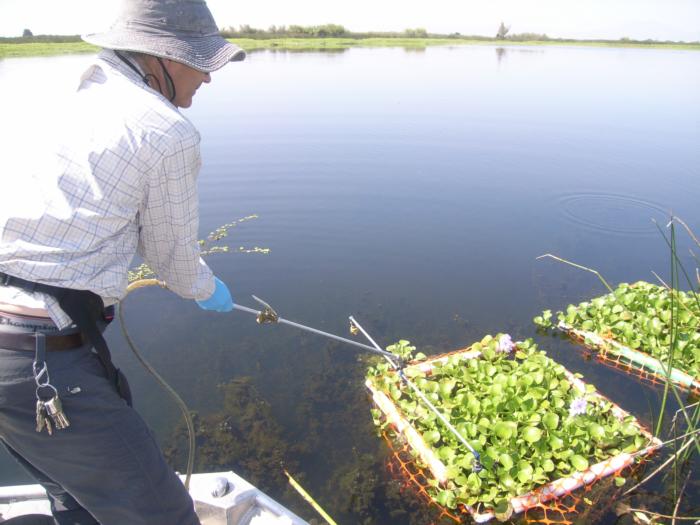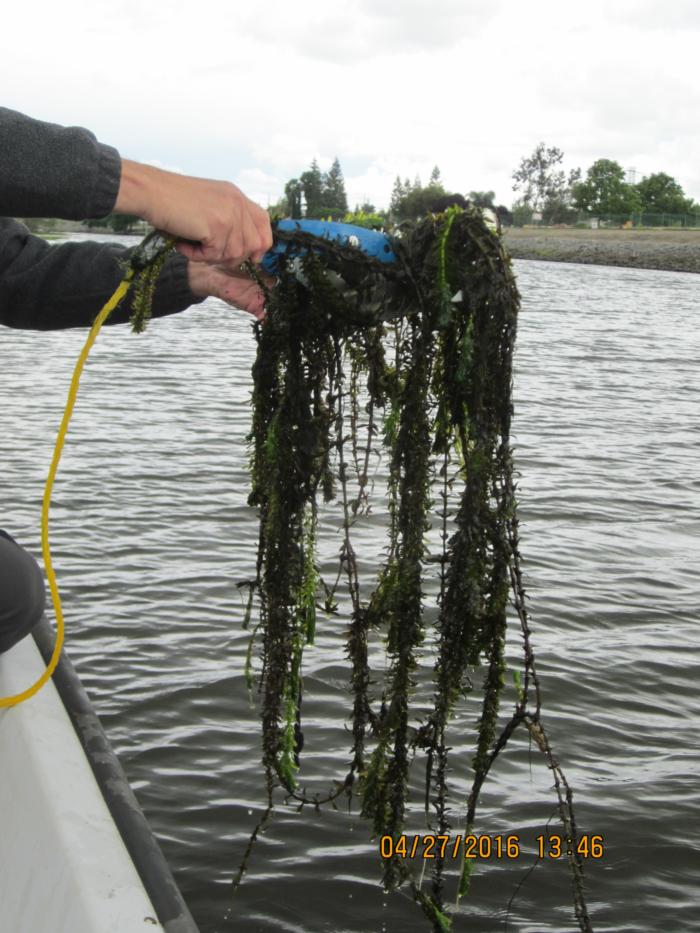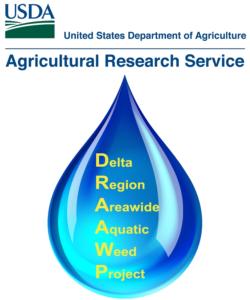Herbicide Testing to Improve Control of Aquatic Weeds in the Delta
Investigators
Project leader: John Madsen, USDA ARS, jmadsen@ucdavis.edu
Collaborators: Brad Hanson, UC Davis; Guy Kyser, UC Davis
Objectives
- Evaluate available approved herbicides and adjuvants for potential to control waterhyacinth
- Evaluate available approved herbicides for potential to control egeria, and better fit expected exposure to conditions in the field.
Background
Herbicide selection for control of aquatic plants is hampered by conflicting environmental issues and concerns. An herbicide has to be registered for use in the United States in general, and California in particular, for use in aquatic habitats. The specific herbicide must have herbicidal activity on the target plant. Water treated with the herbicide may have to be used for competing uses, such as irrigation or drinking, and thus more herbicides are restricted. Lastly, some herbicide may not be allowed by natural resource agencies for concerns regarding specific sensitive species, endangered species, or other issues.
A number of herbicides have been recently approved for use in water by the US EPA and CA DPR. We are testing these new, often low-risk, herbicides along with herbicides previously used for controlling waterhyacinth and egeria, in field or controlled outdoor experiments.
Approaches
We are using replicated floating frames (Figure 1) to grow waterhyacinth in the field, and test newly approved herbicides and adjuvants. Plants are grown in the frames for two to four weeks, than treated with specific rates of herbicides. After six to eight weeks, we harvest plants from the frames and determine the effectiveness of different herbicides and adjuvants for the waterhyacinth management program. We are planning tests with glyphosate, 2,4-D, penoxsulam, and imazamox in the upcoming season.
Since it grows submersed in the water, testing egeria is more complicated. We are using small tanks to test different concentrations of herbicides for control of egeria (Figure 2). Using small tanks, we can easily vary both the concentration and the length of exposure, as needed. We are planning tests with several herbicides, including imazamox, penoxsulam, fluridone, endothall, and flumioxazin.
Figure 1. Waterhyacinth in a frame being treated with an herbicide / adjuvant mixture.

Figure 2. Egeria or Brazilian elodea.




